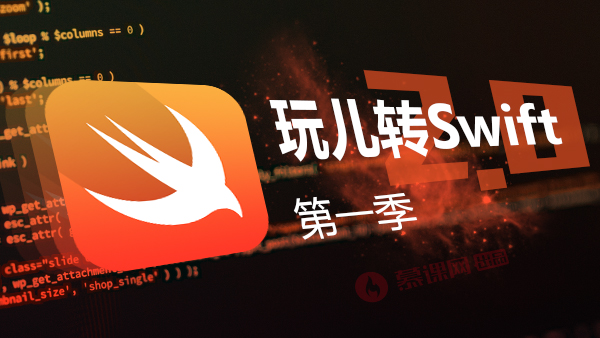一、RunTime简介
RunTime简称运行时。OC就是
运行时机制,也就是在运行时候的一些机制,其中最主要的是消息机制。对于C语言,
函数的调用在编译的时候会决定调用哪个函数。对于OC的函数,属于
动态调用过程,在编译的时候并不能决定真正调用哪个函数,只有在真正运行的时候才会根据函数的名称找到对应的函数来调用。事实证明:
在编译阶段,OC可以
调用任何函数,即使这个函数并未实现,只要声明过就不会报错。在编译阶段,C语言调用
未实现的函数就会报错。
二、Runtime作用
1.发送消息
方法调用的本质,就是让对象发送消息。
objc_msgSend,只有对象才能发送消息,因此以objc开头.
使用
消息机制前提,必须导入#import <objc/message.h>消息机制简单使用
clang -rewrite-objc main.m 查看最终生成代码
// 创建person对象 Person *p = [[Person alloc] init]; // 调用对象方法 [p eat]; // 本质:让对象发送消息 objc_msgSend(p, @selector(eat)); // 调用类方法的方式:两种 // 第一种通过类名调用 [Person eat]; // 第二种通过类对象调用 [[Person class] eat]; // 用类名调用类方法,底层会自动把类名转换成类对象调用 // 本质:让类对象发送消息 objc_msgSend([Person class], @selector(eat));
消息机制原理:对象根据方法编号SEL去映射表查找对应的方法实现
2.交换方法
开发使用场景:系统自带的方法功能不够,给系统自带的方法扩展一些功能,并且保持原有的功能。
方式一:继承系统的类,重写方法.
方式二:使用runtime,交换方法.
@implementation ViewController- (void)viewDidLoad {
[super viewDidLoad]; // Do any additional setup after loading the view, typically from a nib. // 需求:给imageNamed方法提供功能,每次加载图片就判断下图片是否加载成功。 // 步骤一:先搞个分类,定义一个能加载图片并且能打印的方法+ (instancetype)imageWithName:(NSString *)name; // 步骤二:交换imageNamed和imageWithName的实现,就能调用imageWithName,间接调用imageWithName的实现。
UIImage *image = [UIImage imageNamed:@"123"];
}@end@implementation UIImage (Image)// 加载分类到内存的时候调用+ (void)load
{ // 交换方法 // 获取imageWithName方法地址
Method imageWithName = class_getClassMethod(self, @selector(imageWithName:)); // 获取imageWithName方法地址
Method imageName = class_getClassMethod(self, @selector(imageNamed:)); // 交换方法地址,相当于交换实现方式 method_exchangeImplementations(imageWithName, imageName);
}// 不能在分类中重写系统方法imageNamed,因为会把系统的功能给覆盖掉,而且分类中不能调用super.// 既能加载图片又能打印+ (instancetype)imageWithName:(NSString *)name
{ // 这里调用imageWithName,相当于调用imageName
UIImage *image = [self imageWithName:name]; if (image == nil) {
NSLog(@"加载空的图片");
} return image;
}@end
交换原理:
交换之前:

交换之后:

3.动态添加方法
开发使用场景:如果一个类方法非常多,加载类到内存的时候也比较耗费资源,需要给每个方法生成映射表,可以使用动态给某个类,添加方法解决。
经典面试题:有没有使用performSelector,其实主要想问你有没有动态添加过方法。
简单使用
@implementation ViewController
- (void)viewDidLoad {
[super viewDidLoad]; // Do any additional setup after loading the view, typically from a nib.
Person *p = [[Person alloc] init]; // 默认person,没有实现eat方法,可以通过performSelector调用,但是会报错。 // 动态添加方法就不会报错 [p performSelector:@selector(eat)];
}@end@implementation Person// void(*)()// 默认方法都有两个隐式参数,void eat(id self,SEL sel)
{
NSLog(@"%@ %@",self,NSStringFromSelector(sel));
}// 当一个对象调用未实现的方法,会调用这个方法处理,并且会把对应的方法列表传过来.// 刚好可以用来判断,未实现的方法是不是我们想要动态添加的方法+ (BOOL)resolveInstanceMethod:(SEL)sel
{ if (sel == @selector(eat)) { // 动态添加eat方法 // 第一个参数:给哪个类添加方法 // 第二个参数:添加方法的方法编号 // 第三个参数:添加方法的函数实现(函数地址) // 第四个参数:函数的类型,(返回值+参数类型) v:void @:对象->self :表示SEL->_cmd
class_addMethod(self, @selector(eat), eat, "v@:");
} return [super resolveInstanceMethod:sel];
}@end
4.给分类添加属性
原理:给一个类声明属性,其实本质就是给这个类添加关联,并不是直接把这个值的内存空间添加到类存空间。
@implementation ViewController
- (void)viewDidLoad {
[super viewDidLoad]; // Do any additional setup after loading the view, typically from a nib. // 给系统NSObject类动态添加属性name
NSObject *objc = [[NSObject alloc] init];
objc.name = @"小码哥";
NSLog(@"%@",objc.name);
}@end// 定义关联的keystatic const char *key = "name";@implementation NSObject (Property)- (NSString *)name
{ // 根据关联的key,获取关联的值。
return objc_getAssociatedObject(self, key);
}- (void)setName:(NSString *)name
{ // 第一个参数:给哪个对象添加关联 // 第二个参数:关联的key,通过这个key获取 // 第三个参数:关联的value // 第四个参数:关联的策略 objc_setAssociatedObject(self, key, name, OBJC_ASSOCIATION_RETAIN_NONATOMIC);
}@end
5.字典转模型
设计模型:字典转模型的第一步
模型属性,通常需要跟字典中的key一一对应
问题:一个一个的生成模型属性,很慢?
需求:能不能自动根据一个字典,生成对应的属性。
解决:提供一个分类,专门根据字典生成对应的属性字符串。
@implementation NSObject (Log)// 自动打印属性字符串
+ (void)resolveDict:(NSDictionary *)dict{ // 拼接属性字符串代码
NSMutableString *strM = [NSMutableString string]; // 1.遍历字典,把字典中的所有key取出来,生成对应的属性代码
[dict enumerateKeysAndObjectsUsingBlock:^(id _Nonnull key, id _Nonnull obj, BOOL * _Nonnull stop) { // 类型经常变,抽出来
NSString *type;
if ([obj isKindOfClass:NSClassFromString(@"__NSCFString")]) {
type = @"NSString";
}else if ([obj isKindOfClass:NSClassFromString(@"__NSCFArray")]){
type = @"NSArray";
}else if ([obj isKindOfClass:NSClassFromString(@"__NSCFNumber")]){
type = @"int";
}else if ([obj isKindOfClass:NSClassFromString(@"__NSCFDictionary")]){
type = @"NSDictionary";
} // 属性字符串
NSString *str; if ([type containsString:@"NS"]) {
str = [NSString stringWithFormat:@"@property (nonatomic, strong) %@ *%@;",type,key];
}else{
str = [NSString stringWithFormat:@"@property (nonatomic, assign) %@ %@;",type,key];
} // 每生成属性字符串,就自动换行。
[strM appendFormat:@"\n%@\n",str];
}]; // 把拼接好的字符串打印出来,就好了。
NSLog(@"%@",strM);
}@end
字典转模型的方式一:KVC
@implementation Status+ (instancetype)statusWithDict:(NSDictionary *)dict
{
Status *status = [[self alloc] init];
[status setValuesForKeysWithDictionary:dict]; return status;
}@end
KVC字典转模型弊端:必须保证,模型中的属性和字典中的key一一对应。
如果不一致,就会调用
[<Status 0x7fa74b545d60> setValue:forUndefinedKey:]报key找不到的错。分析:模型中的属性和字典的key不一一对应,系统就会调用
setValue:forUndefinedKey:报错。解决:重写对象的
setValue:forUndefinedKey:,把系统的方法覆盖, 就能继续使用KVC,字典转模型了。
- (void)setValue:(id)value forUndefinedKey:(NSString *)key
{
}
字典转模型的方式二:Runtime
思路:利用运行时,遍历模型中所有属性,根据模型的属性名,去字典中查找key,取出对应的值,给模型的属性赋值。
步骤:提供一个NSObject分类,专门字典转模型,以后所有模型都可以通过这个分类转。
@implementation ViewController- (void)viewDidLoad {
[super viewDidLoad]; // Do any additional setup after loading the view, typically from a nib. // 解析Plist文件
NSString *filePath = [[NSBundle mainBundle] pathForResource:@"status.plist" ofType:nil];
NSDictionary *statusDict = [NSDictionary dictionaryWithContentsOfFile:filePath]; // 获取字典数组
NSArray *dictArr = statusDict[@"statuses"]; // 自动生成模型的属性字符串// [NSObject resolveDict:dictArr[0][@"user"]];
_statuses = [NSMutableArray array]; // 遍历字典数组
for (NSDictionary *dict in dictArr) {
Status *status = [Status modelWithDict:dict];
[_statuses addObject:status];
} // 测试数据
NSLog(@"%@ %@",_statuses,[_statuses[0] user]);
}@end@implementation NSObject (Model)+ (instancetype)modelWithDict:(NSDictionary *)dict
{ // 思路:遍历模型中所有属性-》使用运行时 // 0.创建对应的对象
id objc = [[self alloc] init]; // 1.利用runtime给对象中的成员属性赋值 // class_copyIvarList:获取类中的所有成员属性 // Ivar:成员属性的意思 // 第一个参数:表示获取哪个类中的成员属性 // 第二个参数:表示这个类有多少成员属性,传入一个Int变量地址,会自动给这个变量赋值 // 返回值Ivar *:指的是一个ivar数组,会把所有成员属性放在一个数组中,通过返回的数组就能全部获取到。
/* 类似下面这种写法
Ivar ivar;
Ivar ivar1;
Ivar ivar2;
// 定义一个ivar的数组a
Ivar a[] = {ivar,ivar1,ivar2};
// 用一个Ivar *指针指向数组第一个元素
Ivar *ivarList = a;
// 根据指针访问数组第一个元素
ivarList[0]; */
unsigned int count; // 获取类中的所有成员属性
Ivar *ivarList = class_copyIvarList(self, &count); for (int i = 0; i < count; i++) { // 根据角标,从数组取出对应的成员属性
Ivar ivar = ivarList[i]; // 获取成员属性名
NSString *name = [NSString stringWithUTF8String:ivar_getName(ivar)]; // 处理成员属性名->字典中的key // 从第一个角标开始截取
NSString *key = [name substringFromIndex:1]; // 根据成员属性名去字典中查找对应的value
id value = dict[key]; // 二级转换:如果字典中还有字典,也需要把对应的字典转换成模型 // 判断下value是否是字典
if ([value isKindOfClass:[NSDictionary class]]) { // 字典转模型 // 获取模型的类对象,调用modelWithDict // 模型的类名已知,就是成员属性的类型 // 获取成员属性类型
NSString *type = [NSString stringWithUTF8String:ivar_getTypeEncoding(ivar)]; // 生成的是这种@"@\"User\"" 类型 -》 @"User" 在OC字符串中 \" -> ",\是转义的意思,不占用字符 // 裁剪类型字符串
NSRange range = [type rangeOfString:@"\""];
type = [type substringFromIndex:range.location + range.length];
range = [type rangeOfString:@"\""]; // 裁剪到哪个角标,不包括当前角标
type = [type substringToIndex:range.location]; // 根据字符串类名生成类对象
Class modelClass = NSClassFromString(type); if (modelClass) { // 有对应的模型才需要转 // 把字典转模型
value = [modelClass modelWithDict:value];
}
} // 三级转换:NSArray中也是字典,把数组中的字典转换成模型. // 判断值是否是数组
if ([value isKindOfClass:[NSArray class]]) { // 判断对应类有没有实现字典数组转模型数组的协议
if ([self respondsToSelector:@selector(arrayContainModelClass)]) { // 转换成id类型,就能调用任何对象的方法
id idSelf = self; // 获取数组中字典对应的模型
NSString *type = [idSelf arrayContainModelClass][key]; // 生成模型
Class classModel = NSClassFromString(type);
NSMutableArray *arrM = [NSMutableArray array]; // 遍历字典数组,生成模型数组
for (NSDictionary *dict in value) { // 字典转模型
id model = [classModel modelWithDict:dict];
[arrM addObject:model];
} // 把模型数组赋值给value
value = arrM;
}
} if (value) { // 有值,才需要给模型的属性赋值 // 利用KVC给模型中的属性赋值 [objc setValue:value forKey:key];
}
} return objc;
}@end作者:鸿鹄当高远
原文链接:https://www.cnblogs.com/jukaiit/p/5242211.html

 随时随地看视频
随时随地看视频




